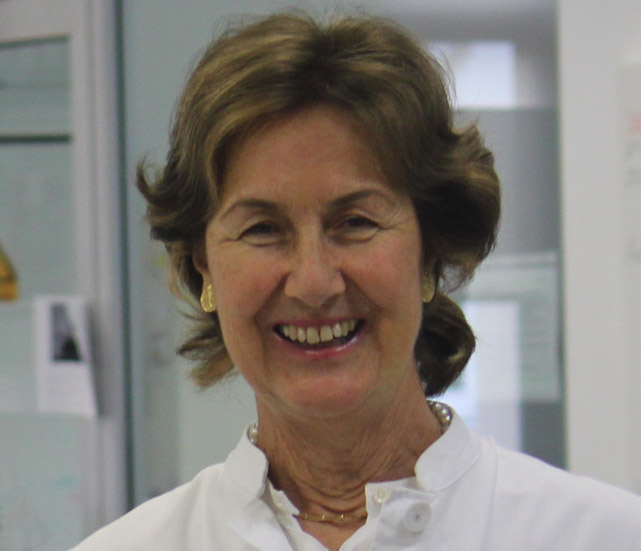
Diseases of Interest
 Dear Patients and Families,
Dear Patients and Families,
During your fight with a severe disease, you are shedding light on our research. On the long way to therapies, this light helps us to unravel and understand the mechanisms underlying your disease, however, we can move forward step by step. Our strongest support on the way to the target is your trust and faith. Genetic diagnosis is inevitable in identifying your disease. This is also true for diseases for which there are no therapies yet, since today’s treatments are geared towards genetic findings. We are aware that the path leading to therapies is long and challenging. However, we also know that future therapies must be designed well in advance. By providing your blood sample, you do not only receive a genetic diagnosis, but you also participate in the formation of the Turkish gene pool, thus contributing to worldwide research on this topic. The unknowns will be illuminated by your steadily increasing and personal support.
Thank you for being on board with us.
Neurodegenerative Diseases (NDD)
Neurons are the cells in the central and peripheral nervous systems. Neurodegeneration refers to the destruction of the structure and function of these neurons. Degeneration ultimately leads to the death of these cells, which initiate the disease process. In recent years, due to the expansion of life span, neurodegenerative diseases have drastically increased in the aging population, worldwide leading to a great health burden. The most common representatives of NDD are Alzheimer’s and Parkinson’s, followed by motor neuron diseases (ALS), ataxias, and Huntington’s disease.

Disorders of the brain are not only devastating for the affected patients, but also for their families, often robbing individuals of the qualities that we most strongly associate with being human. Moreover, since the mechanisms of these progressive diseases still remain unknown, treatments are still elusive. Along with cancer and cardiovascular disease, NDD constitute one of the main research foci of molecular science.
The clinical features of neurodegenerative diseases differ from each other because in each disease, neuronal damage and death target a different part of the brain. Selective vulnerability, which refers to the observation that a select group of neurons is vulnerable to degeneration, is a term that has emerged with the increasing prevalence of neurodegenerative diseases. Selective vulnerability aside, these diseases overlap in some ways in terms of cellular mechanisms at play and are thus categorized under the umbrella term of neurodegenerative diseases. It is expected that understanding the mechanism of one, can help solve the mystery of other neurodegenerative diseases. Only a complete understanding of the disease mechanisms can lead to the development of effective treatments. Until recently, both clinicians and laboratory scientists felt a mixture of optimism and pessimism about the possibility of developing mechanism-based treatments. For mechanism-based treatments, it is necessary to first verify that the treatment works in a model system, test it on patients, and then optimize the treatment based on feedback from patients. This entails a long and expensive process, with no guarantee of success at the end. However, the circumstances have entirely changed in recent years, thanks to the progress made in cell and developmental biology, the ability to test experimental drugs in realistic animal models, and the powerful exome sequencing and bioinformatic analysis tools that have been developed in the past two years. These have made possible the identification and exploration of all the coding regions of the genome. Translational research, which brings genetics and medicine closer together than ever before, making possible the rapid translation of research laboratory results to the patient, requires not only teamwork between scientists and clinicians, but also interdisciplinary collaboration. At the forefront of what is leading translational research is the recent progress made in molecular genetics and cell biology, development of high-throughput genome technologies, the ability to read and study the human genome down to its finest details, and our ability to see -in high resolution- inside the cell through chemical, physical, and visual methods.
The most common feature of neurodegenerative diseases is their late age of onset: in other words, age is an important risk factor. Another common feature is that about 5-10% of cases are inherited according to Mendelian rules, whereas in the remaining 90-95% of cases there is a complex inheritance pattern (the only exception is Huntington’s disease, FRDA and SMA which always follow Mendelian inheritance). In complex inheritance, genetic, epigenetic, environmental and lifestyle-related factors play a part, in addition to a number of stochastic parameters. Nevertheless, the greatest risk factor is advanced age, thus, the aging cell. Through our research, we strive to understand the more prevalent complex diseases of the nervous system from the genetic perspective of Mendelian-inherited disorders. However, recent progress has taught us that even Mendelian diseases are more complex than anticipated. This explains the low success rate in previous therapy attempts and promptly initiated the development of new-generation therapies, the best example being the successful and routine application of Nusinersen to SMA patients.




